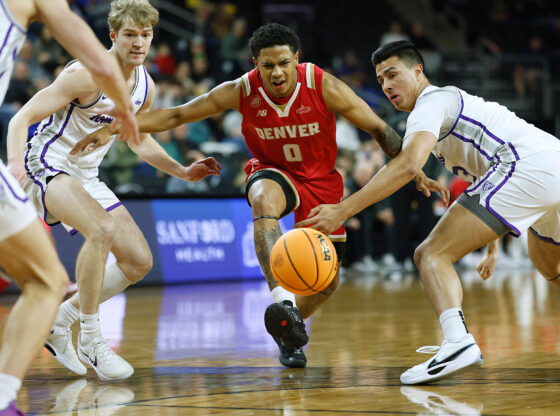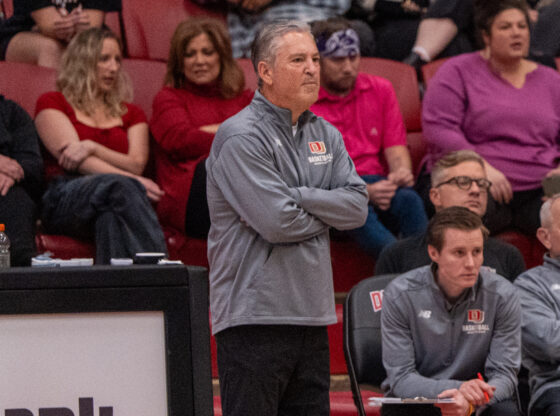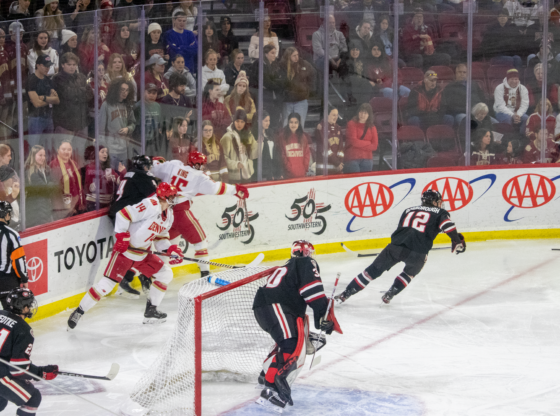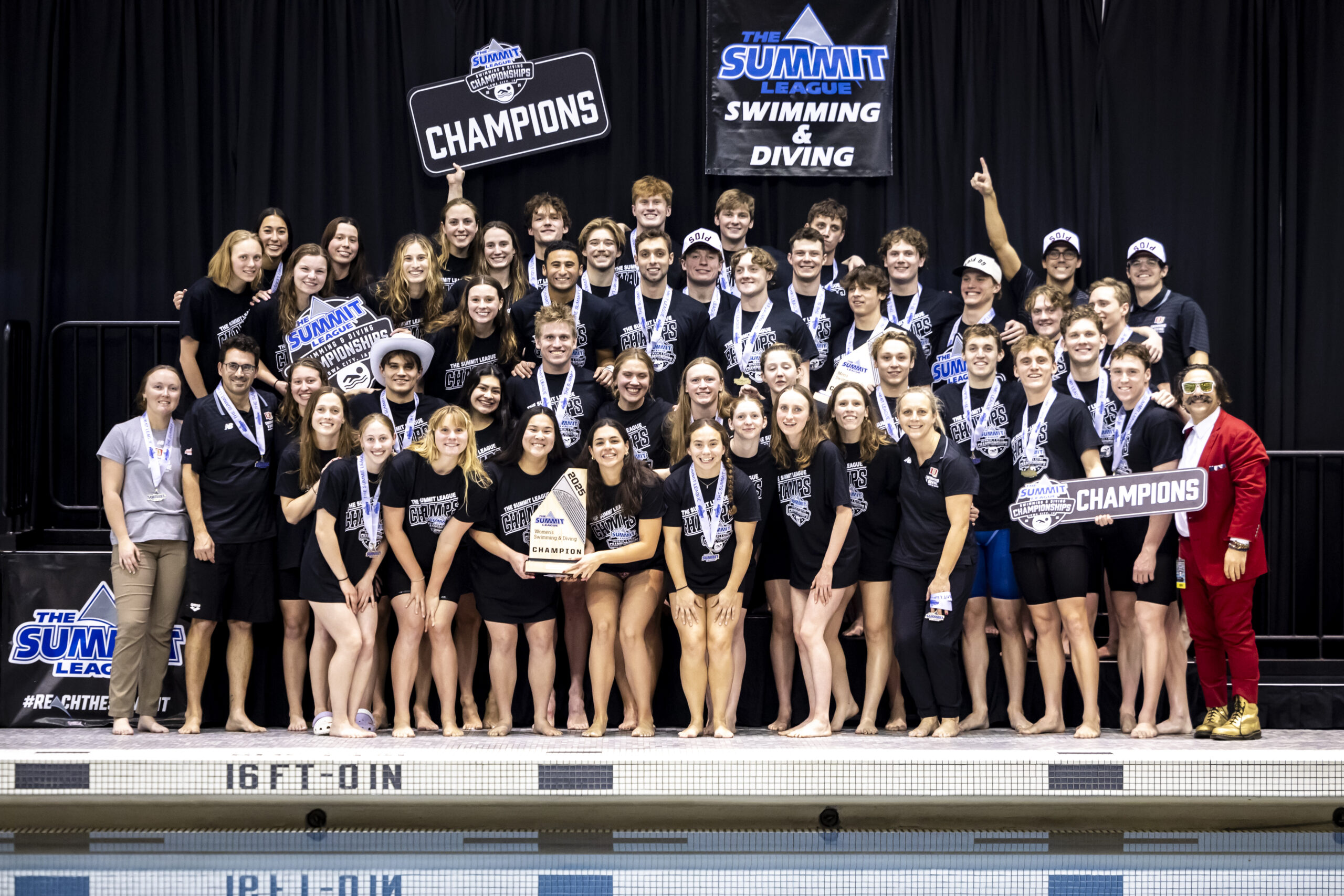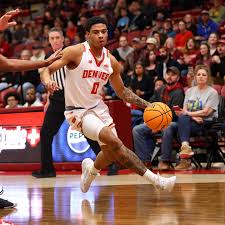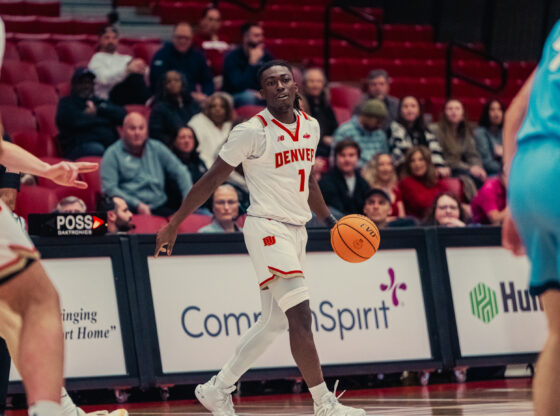 Photo by: Andrew Fielding
Photo by: Andrew Fielding
“I’m a B.A. – that stands for “‘Bad Ass.'”
That’s how Lacey Henderson, a soon to be DU alumna, describes herself. She’s a model student, with a 3.6 GPA, a cheerleader, trilingual in French, English and Spanish, and she even finds time to volunteer. Oh, and she’s scheduled to speak at TEDxDU on Thursday.
But here’s the kicker: at the age of 10, her right leg was amputated above the knee due to cancer.
Recently, she got back into track and field, something she enjoyed doing before losing her leg. She started off with Masters indoor meets and competed in the 60m running portions.
“I just went balls to the wall and did it” Henderson said, recounting the fact that she didn’t have time to fully train before starting in competitions, already being occupied with cheerleading at DU sporting events and being a full time student.
Despite the fact that Henderson only received her running leg, an amalgamation of a carbon fiber lower leg, rubber foot, socket and a metal knee, a few months ago, she had been participating in events with her daily leg, which has a computerized knee, compared to the pneumatic one in her running leg.
It is significantly more difficult to run with a computerized leg than a specialized leg. Lacking in a computerized leg is a springlike function in the ankle area, something that is found in both running legs and real legs.
Her goal is to compete in the London 2012 Paralympic Games, which will take place in the currently-under-construction Olympic Stadium. The Paralympics are made up of adaptive programs, which indicates that there is a modification or accommodation made to each event.
There’s one discipline Henderson puts above the rest and it’s pole vaulting. However, it is currently not a sport that is a part of Paralympic Games.
Track and Field 42, usually abbreviated T42, is Henderson’s classification. It describes being an above the knee single leg amputee.
She was told it would be impossible to pole vault as an above knee amputee because of the straight-leg drive required of the discipline.
However, Henderson already holds the world record for women’s T42 pole vaulting. She holds the men and women’s T42 world record.
Based upon her pole-vaulting prowess, one of the major players in the artificial leg business, Ossur, manufacturer of her running leg, extended an invitation to Henderson to travel to Chula Vista, Calif., and spend a week at the US Olympic training center.
She accepted and once there, was evaluated alongside seven other hopefuls, all of whom were men. They were evaluated to see if they matched the quality that Team USA was looking for.
Although nobody received an invitation to train full-time at the national training center, Henderson called the experience “pretty sweet”. She noted that she had fun, learned a lot and got to meet some of the best para-athletes in the world.
Though pole vaulting isn’t a Paralympic sport, she hopes to exhibit it at the games for future consideration – to do so, she needs just six other athletes from a total of four different countries.
Henderson is currently being trained by a specialized pole-vaulting coach, and her father, T.J. Henderson, trains her in sprinting. Recently, she also started a diet meant to increase athletic performance as well as twice daily workouts to prepare for the upcoming Nationals in Miramar, Fla., June 17-19.
She’ll soon be adding a long jump coach at the recommendation of Cathy Sellers, of the U.S. Paralympic track and field program. The long jump will provide Henderson with a second event to participate in since it is currently contested in her classification.
Henderson says her role model is South African Paralympian Oscar Pistorius.
“He’s an inspiration for a lot of people,” Henderson said. “He’s an inspiration for me, for pole vaulting because he did something and proved to the whole entire world that even though we have these labels that have been put on us, he could do it.”
Though Henderson currently supports herself, and covers her own training expenses, she will start to receive USOC funding if she qualifies at Nationals.
She is virtually assured of a spot because there are no other T42 women on the team and there are only a few expected to compete at Nationals. By Henderson’s estimate, only about 10 people compete in the the women’s T42 category worldwide.
While other types of disabilities get additional events, Henderson is forced to compete in whatever is made available to her classification level. Unfortunately, at this time only 100m sprint and a few field events are available. The outlook for additional events for London 2012 and Rio De Janeiro 2016 is bleak.
“The OIympic Committee moves about as fast as molasses,” Henderson said when discussing the prospects for 2012 and 2016 in regards to T42 athletes. “And the Paralympic Committee moves even slower.”
After Nationals, Henderson will be competing in the Parapan American Games to be held Nov. 12-20 of this year in Guadalajara, Mexico.
Ultimately, Henderson hopes to compete in the London 2012 Paralympics, and after that she’ll consider taking on winter sports.
She’s most interested in the still developing sport of adaptive snowboarding, but she wants to take summer sports seriously first.
“My brother’s name is Trax, and my middle name is Fields,” she says. “This is in my blood.”
Given the familial predisposition to the sport, one question begs to be asked: is she doing it for herself or for her father?
“I’m definitely doing this for myself. I’m excited, I really enjoy it,” Henderson said without missing a beat.



